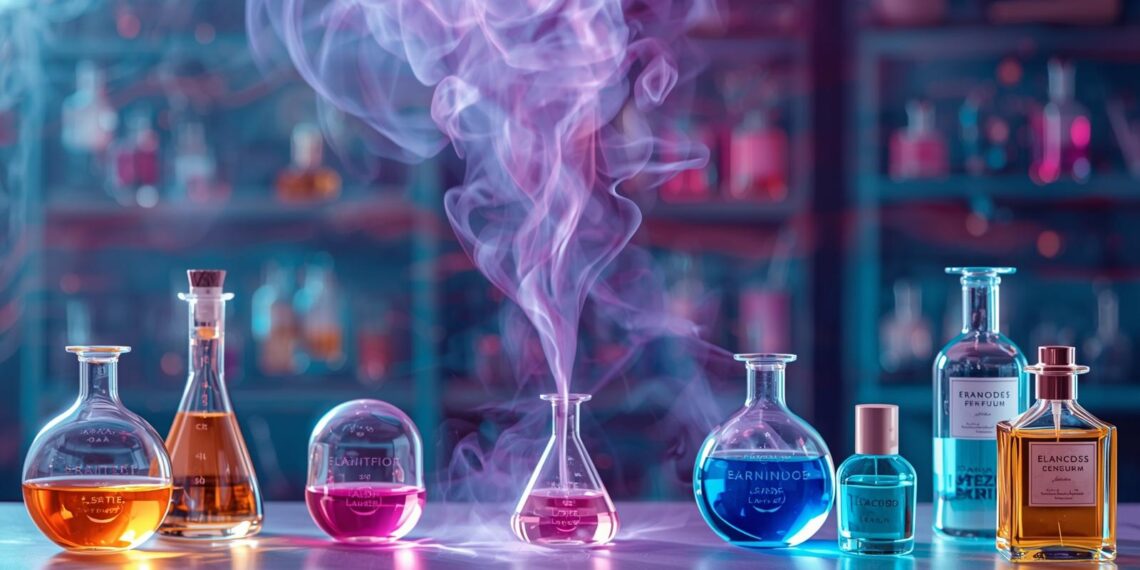In today’s sophisticated wellness landscape, the art of perfume formulation stands out as both an ancient craft and a modern science. This unique blend of tradition and innovation makes it a fascinating subject for wellness product developers, lifestyle curators, and wellness coaches alike. Understanding the basics of perfume formulation provides not just insights into fragrance creation but also a deeper understanding of how scent influences identity and social practices.
Perfume formulation is the intricate process of blending various aromatic compounds to create a fragrance that is both pleasing and evocative. At the heart of this process are three key components: the perfume ingredients, the fragrance formula, and the perfume creation process itself.
Perfume ingredients are the building blocks of any fragrance. They can be categorized into three main types: natural extracts, synthetic compounds, and essential oils.
- Natural Extracts: These are derived from flowers, fruits, spices, woods, and resins. Natural extracts are prized for their authenticity and complexity. They can evoke powerful emotional and sensory responses and are often associated with luxury.
- Synthetic Compounds: Modern perfumery relies heavily on synthetic compounds, which allow perfumers to create scents that may not be available in nature. These compounds also offer greater consistency and longevity in fragrances.
- Essential Oils: Extracted from plants, essential oils are concentrated and potent. They are popular in wellness circles for their therapeutic properties and are often used in aromatherapy.
A fragrance formula is a detailed recipe that outlines the specific ingredients and their proportions. It is essential for achieving the desired scent profile and maintaining consistency across different batches.
- Top Notes: These are the initial scents perceived upon application. They are usually light and evaporate quickly, setting the first impression of the fragrance.
- Middle Notes: Also known as heart notes, these form the core of the fragrance and emerge once the top notes dissipate. They add depth and fullness to the perfume.
- Base Notes: These are the foundation of the fragrance, providing lasting scent and depth. Base notes are rich and linger for hours, anchoring the perfume.
Creating a successful perfume involves more than just mixing ingredients. It requires an understanding of consumer behavior and current trends in wellness and lifestyle.

Today’s consumers are increasingly interested in wellness, seeking products that enhance their physical, emotional, and spiritual well-being. Perfumes that incorporate natural and sustainable ingredients or that offer therapeutic benefits are particularly appealing.
- Sustainability: With growing awareness of environmental issues, consumers are drawn to perfumes made from sustainably sourced ingredients and eco-friendly production processes.
- Personalization: The demand for personalized experiences extends to fragrances. Customizable perfumes that allow consumers to tailor scents to their preferences are gaining popularity.
- Holistic Well-being: Fragrances that promote relaxation, focus, or other wellness outcomes resonate with consumers looking for holistic well-being solutions.
Perfume is not just a product; it is a powerful tool for self-expression and identity. Understanding this dynamic can help product developers and marketers connect more deeply with their audience.
- Cultural Significance: Fragrances can carry cultural significance, influencing social practices and personal rituals. Acknowledging these influences can enhance a brand’s authenticity and appeal.
- Emotional Connection: Scents have a profound ability to evoke memories and emotions, making them a potent medium for storytelling and brand narrative.
As the wellness industry continues to evolve, staying informed about the latest trends and consumer preferences is crucial for success. Here are some practical insights and applications:
Understanding the basics of perfume formulation empowers developers to craft innovative products that align with contemporary wellness trends. By focusing on sustainability, personalization, and holistic well-being, developers can create fragrances that resonate with modern consumers.
Editors can enrich their content by exploring the intersection of fragrance and wellness. Articles that delve into the cultural, emotional, and social aspects of perfume can engage readers and reflect the evolving dynamics of consumer behavior.
Coaches can leverage their understanding of fragrance formulation to offer clients personalized wellness strategies. By recommending scents that support clients’ emotional and physical goals, coaches can enhance their offerings and align them with broader wellness trends.
In the tapestry of modern wellness, perfume formulation occupies a unique and influential position. By understanding the basics of this art and science, professionals in the wellness industry can craft products and strategies that not only captivate the senses but also enhance well-being and personal expression. As we continue to explore the future trajectory of wellness, the role of fragrance will undoubtedly remain a vital and evolving narrative.




